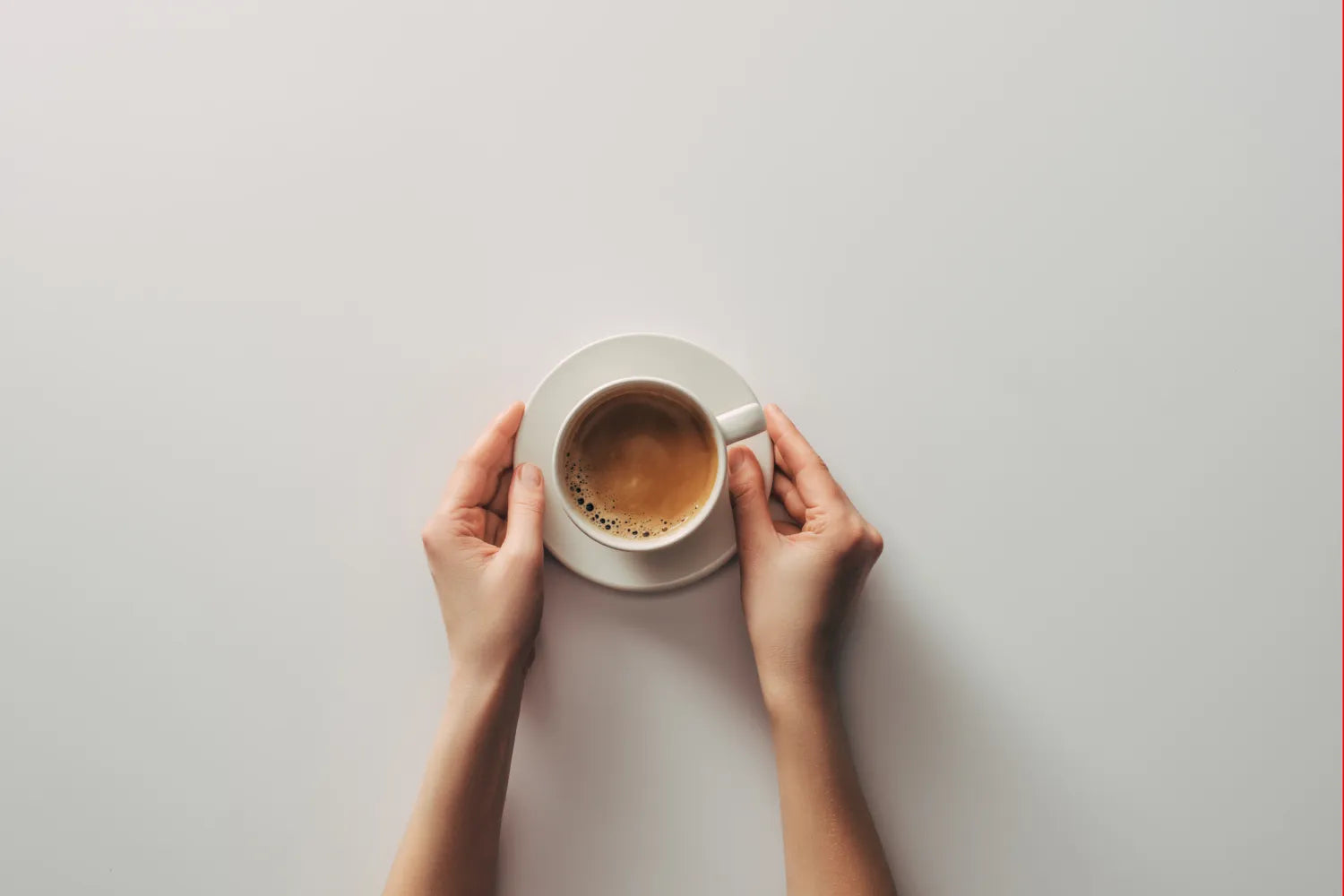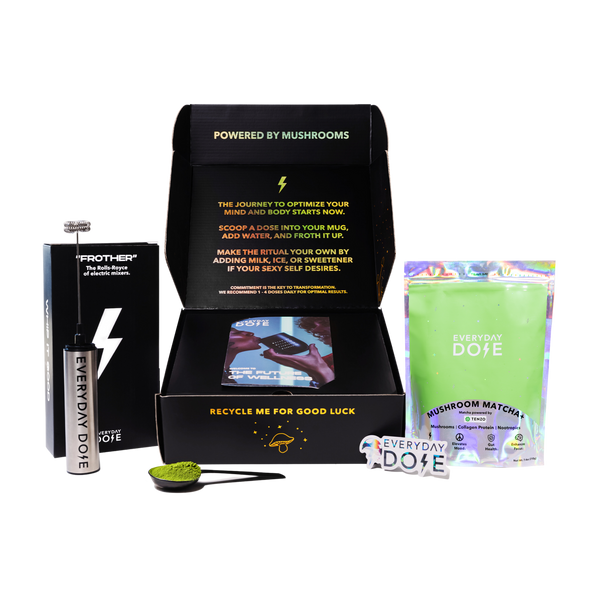How To Make the Smoothest Cup of Coffee

Some people drink coffee just for the caffeine. We get it — Mondays are hard, some of us stayed up a little too late last night, and others of us may still be going strong with our early-morning New Year’s resolutions.
That being said, there’s another group of coffee drinkers who prize the earthy, velvety taste of coffee — and they’ll do anything for a smooth and flavorful cup of coffee. If that’s you, you’ll want to read on as we discuss how to make the smoothest cup of coffee.
What Goes Into Making the Smoothest Cup of Coffee?
First, let’s dive into the details. If you’d rather skip ahead to the recipe, by all means, go ahead — however, knowing why each element is important can help you make small tweaks to our recipe until it’s like heaven in a mug.
1. Choosing the Right Coffee Beans
No amount of fancy brewing can save bad beans. Arabica beans are generally the best choice, as they naturally have lower acidity and a softer, sweeter flavor. Look for single-origin beans if you want a clean, well-defined taste, or go for a blend if you're after a more balanced flavor profile.
Roast level matters, too. While dark roasts are bold and rich, they can sometimes bring bitterness, which can be an acquired taste. A medium roast is typically the sweet spot for smoothness because it preserves the bean’s natural flavors while toning down acidity.
Most importantly, freshness is everything. Buy whole beans from a reputable roaster and grind them yourself. Pre-ground coffee may be convenient, but it’ll also yield a stale and less-than-flavorful cup of coffee.
2. Proper Grinding Technique
Think of your coffee grinder as a flavor control panel — get it right, and you’ll unlock peak smoothness. First, you need to ditch the blade grinder. It’s basically a tiny food processor that chops beans into inconsistent sizes, leading to uneven extraction and a harsh, bitter taste. Instead, invest in a burr grinder, which crushes beans uniformly for a consistently smooth brew.
Grind size also plays a major role. Too fine, and you’ll over-extract your coffee, creating a muddy-tasting cup. Too coarse, and your coffee will be weak and watery. For ultimate smoothness, aim for a medium-coarse grind for pour-over or a coarse grind for cold brew.
You should also grind your beans right before brewing to preserve aromatic oils and delicate flavors. Pre-ground coffee loses its edge fast, which basically drains the coffee of flavor as it sits in your cabinet.
3. Best Brewing Methods
Smooth coffee isn’t just about what you brew — it’s how you brew it. The right brewing method can make all the difference between a balanced, velvety sip and a bitter disappointment.
Cold brew is king when it comes to smoothness. By steeping coarsely ground beans in cold water for 12 to 24 hours, you get a naturally sweet, mellow coffee with zero bitterness. However, cold brew is, well, cold, which might not be what you’re looking for on a chilly winter morning.
AeroPress is another option that provides espresso-like richness with less acidity. The quick immersion method extracts bold flavors without overdoing it, which produces a coffee that is almost too good to be true.
Pour-over methods (like Chemex or V60) are for the type A, precision lovers out there. With a slow, controlled extraction process and a thick filter, pour-over removes excess oils and bitterness.
4. Water Quality
You wouldn’t cook pasta in swamp water, so don’t brew coffee with anything less than filtered water. Tap water often contains minerals and chlorine that can mess with your coffee’s flavor.
Temperature is just as important, if not more important. Water that’s too hot (above 205°F) will scorch the beans and cause a bitter or burnt taste. Too cool (below 195°F), and you’ll end up with an underwhelming cuppa. Aim for the sweet spot in between, if you can — a 10-degree difference isn’t much to work with, but we promise, it makes all the difference.
Finally, don’t forget the water-to-coffee ratio. A standard 1:16 ratio (one part coffee to 16 parts water) is a good starting point, but if you want even more smoothness, try a slightly lower coffee concentration.
How To Make the Smoothest Coffee in 5 Steps
So, we have all the pieces of the puzzle — now, how do we put them together? Here’s a basic how-to for making the smoothest cup of coffee you’ll ever try.
Ingredients:
- 20g high-quality medium roast Arabica beans
- 320g filtered water (heated to 195 to 205°F)
- Preferred brewing method (AeroPress, pour-over, or cold brew)
Instructions:
- Grind your beans to a medium-coarse consistency using a burr grinder.
- Heat your water to the optimal temperature.
- Set up your brewing method.
- Brew your coffee, following your method’s specific guidelines for water pouring and steeping time.
- Serve immediately in a pre-warmed cup for the smoothest taste.
Tips To Make the Best Coffee
We’ve already discussed the basics of how to make a newsworthy cup of coffee, but there are a few tricks you can use to really up the quality. For starters, you can opt for lower-acid (or functional) coffee, consider your coffee storage practices, and add some new ingredients.
Try a Lower-Acid Coffee
If acidity makes your coffee feel harsh or sour, switching to a low-acid coffee can help. Look for beans labeled “low-acid” or choose naturally smooth varieties like Brazilian, Sumatran, or Guatemalan coffee. A darker roast can also mellow out acidity, though it may add a bolder flavor.
You could also try our Bold Coffee+, which features a focus-supporting kick of caffeine while still providing a deliciously smooth flavor. Plus, our coffee is made with functional mushrooms to help encourage brain power and immunity, L-theanine to help you feel relaxed, and collagen protein to support your gut and skin health.
If the idea of grinding your beans every day, agonizing over which beans to buy, and deciding on brewing methods feels overwhelming, go for our Bold Coffee+. All you need to do is simply add hot water and stir it up — no calculations or heavy lifting required.
Store Your Coffee Correctly
Even the best beans will go stale if you store them wrong. Basically, you want to avoid oxygen, moisture, heat, and light. That means you shouldn’t store them in the fridge or freezer — coffee absorbs odors like a sponge, and condensation ruins the flavor.
Instead, store whole beans in an airtight, opaque container at room temperature. Keep them in a cool, dark place—your pantry is perfect. Proper storage keeps your coffee’s natural oils and flavors intact, ensuring a consistently smooth cup every time.
Try New Things
If you’re serious about smoothness, a tiny pinch of salt in your coffee grounds can reduce bitterness — yes, really! Some coffee lovers also add a splash of milk or oat milk, which softens the acidity and adds a creamy texture.
If you want an ultra-smooth cup, you could also try adding a tiny bit of baking soda to your water before brewing. It neutralizes acidity and enhances overall smoothness. Just don’t go overboard — too much, and you’ll end up with coffee that tastes more like a science experiment.
The Bottom Line
Coffee isn’t just a vehicle for caffeine — it’s an experience, one that many people close their eyes and savor until it’s gone. Of course, it’s easier to savor your cup of coffee if it’s smooth, flavorful, and full of health benefits.
Our mushroom coffee have it all: taste, texture, and terrific benefits (like how they can support focus, relaxation, high-quality sleep, and good digestion). If it sounds too good to be true, try it for yourself. When you go back for your second and third bags, we won’t say “I told you so.”
Sources:
The Benefits Of Cold-brewing Your Coffee | Piedmont Healthcare
Coffee Brewing | CoffeeResearch.org
Neutralize pH with Baking Soda Video | American Heart Association








